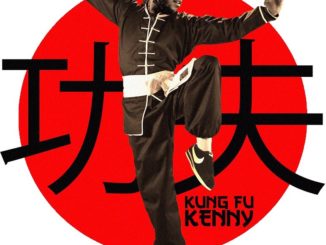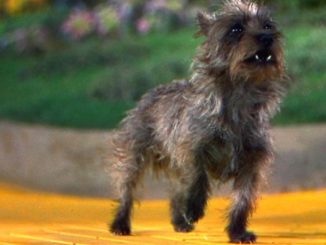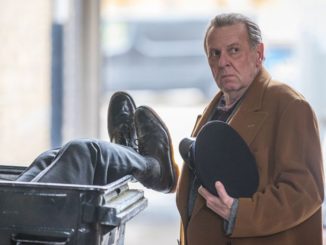
Cold-blooded murder, gang wars, and explosions – was it a Hollywood production? No, it was the streets of Chicago during the 1920’s. The public’s fascination with real crime and gangsters was a guilty pleasure that helped generate huge profits for Hollywood. What was happening on the streets during the 20’s would fuel the popularity of the crime and gangster movie genre in the 1930’s and 1940’s. So much so, that a new classification of movie emerged – film noir.
The history of the crime and gangster movie has its roots in the silent films of the early part of the 20th century. However, it wasn’t until the late 1920’s through the 30’s that these films became a bit more lifelike to moviegoers. The high-profile existence of actual gangsters, their crimes, and the amount of puplicity they received caused this movie genre to flourish. These included notorious names such as Al Capone and John Dillinger. Gangsters became as widely identifiable to the general public as presidents. On the movie screen, these characters were often portrayed as being money hungry, violent and inclined to shoot first and ask questions later. Film-goers loved it!
With that in mind, here are some of the most interesting, exciting, and enjoyable early crime and gangster movies:
The silent film Underworld came out In 1927, starred George Bancroft as ‘Bull Weed’ along with Clive Brook as ‘Rolls Royce’. There is a unique twist to this story, as it is told completely from the gangsters point of view. A crime kingpin, his ‘moll’ (Evelyn Brent), a befriended derelict, and a vicious rival (Fred Kohler); what could go wrong?
Originally predicted to be a flop, this film became very successful as a result of strong word-of-mouth, and even won a Best Writing Oscar for Ben Hecht. Over 80 years later, this picture is considered by many to be the first modern American gangster movie.
The Public Enemy, released in 1931, tells the story of two brothers growing up during the prohibition-era. Tom (James Cagney) is a small-time hood with a lot of the wrong kind of ambition, while Mike (Donald Cook) works hard, goes to school, and enlists in the Marines during World War I. With his brother serving his country, Tom and his life-long friend Matt (Edward Woods) rise through the ranks of the Chicago underworld.
Mike returns from the military to find his brother reaping the rewards of a lucrative bootlegging business while he has suffered only the pain of war. Mike tries to get Tom to change his life which only pushes the brothers farther apart. When Tom’s friend Matt is killed, he embarks on a path of revenge that can only lead to one end. This film proved to be James Cagney’s breakout role.
In 1931, Little Caesar hit the big-screen. Aspiring small town criminals Caesar Enrico Bandello (Edward G. Robinson) and Joe Massara (Douglas Fairbanks, Jr.) head for the city of Chicago in search of their fortune. Crime offers opportunity for those who will stop at nothing. Through the use of his gun, Rico is able to work his way up to the head of the gang, earning himself the nickname – “Little Caesar”.
Meanwhile, Joe has taken another path. Choosing to be a dancer, and meeting a girl named Olga (Glenda Farrell), As a result, the relationship between the brothers becomes tense and distant. Rico tries to get Joe to forget about Olga and come back and join him. When Joe refuses, Rico informs him that he has signed a death warrant for himself and Olga.
Worried that Joe, or Olga may betray him, Rico sets out to kill them both. However, for the first time, he is unable to pull the trigger. This could prove to be a big mistake -“Is this the end of Rico”? This is considered by the American Film Institute to be one of the Ten Best Gangster Movies of all-time.
One of the most popular of the early crime and gangster films is 1932’s Scarface. The movie is loosely based on the life of famed gangster Al Capone. In fact, Capone liked the picture so much he had his own copy. Extremely violent and power hungry gangster Antonio ‘Tony’ Camonte (Paul Muni) aims to take over the rackets after former head Big Louis Costillo is murdered.
The police suspect Tony was the killer, having been hired to do the job by Johnny Lovo (Osgood Perkins), but are unable to make a case against him because the body was never found. Tony’s ruthless ambition is fast becoming a threat to Lovo and the other crime bosses. With continued pressure from the police along with the suspicion and danger presented by Lovo and friends, a violent showdown can’t be far off. Enjoy the terrific portrayals of mobsters Guino Rinaldo and Gaffney by George Raft and Boris Karloff.
Scarface was directed by Howard Hawks, and produced by Howard Hughes. The film was considered so violent and glorifying of the gangster lifestyle that, although it was completed in 1931, was not released until the next year. 1932’s Scarface is on the American Film Institutes list of the Ten Best Gangster Movies of all-time. Today’s movie audience’s are most familiar with the contemporized 1983 Brian De Palma remake of Scarface starring Al Pacino that has become a cult classic.
Warner Bros. produced a string of successful crime and gangster movies during the thirty’s, and 1939’s The Roaring Twenties just may be the best of the Warner productions. The story begins just after the end of World War I. Having met in a large artillery shell hole and become friends during the war, returning veterans Eddie Bartlett (James Cagney), George Hally (Humphrey Bogart), and Lloyd Hart (Jeffery Lynn) re-enter society.
Eddie, unable to get his old job back as a mechanic, joins neighborhood friend Danny as a cab driver, George, a former bar keeper, becomes a bootlegger, and Lloyd looks for work as a lawyer. Eddie and Danny use their cab business to build a fleet of cabs all bootlegging liquor, and hire Lloyd to be their lawyer.
Eddie and George’s illegal paths cross during a liquor hijacking and they form an ill-fated partnership. Their empire is thriving; that is until wars over territory, double-crossing treachery, love, and the great stock market crash threaten to bring everyone down.
This was perhaps the final gangster film of its kind before the genre regenerated itself as film noir. One of the great “Hollywood gangsters” in motion picture history, James Cagney, did not play another gangster role for ten years until the classic White Heat.
Even though movies about crime and gangsters continue to be made, it will always be difficult, if not impossible, to duplicate the true to life crime and gangster productions of the mid-20th century.
Proudly WWW.PONIREVO.COM
by Carl DiNello



